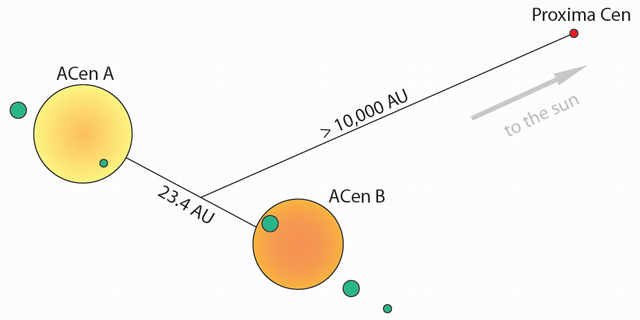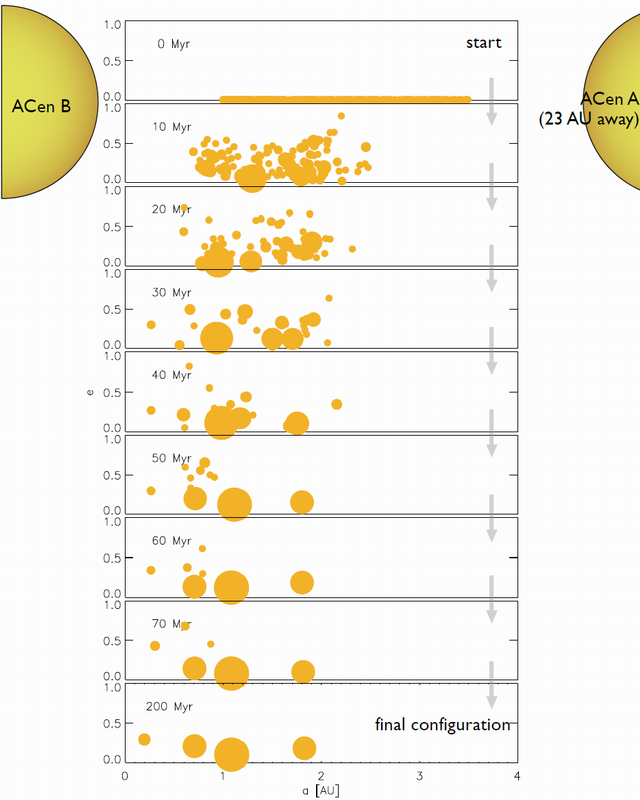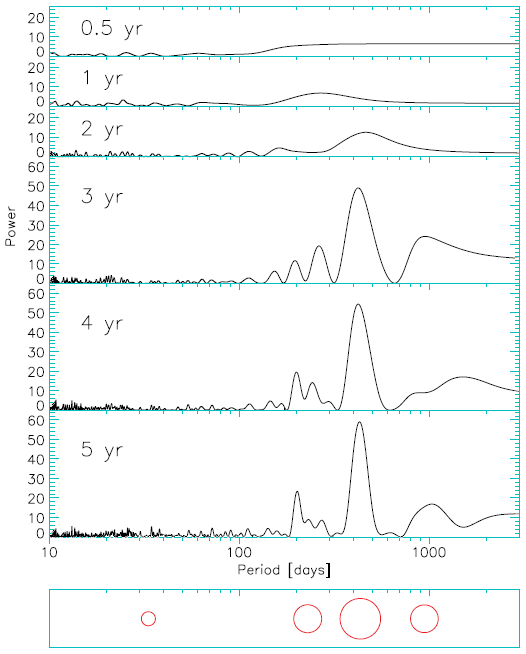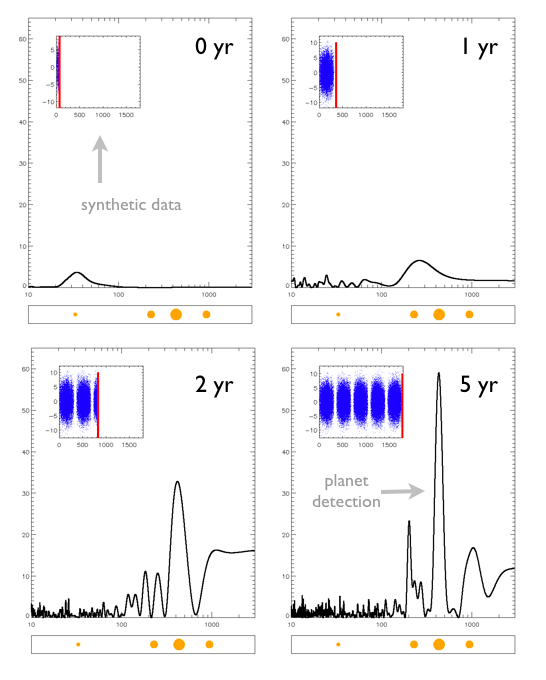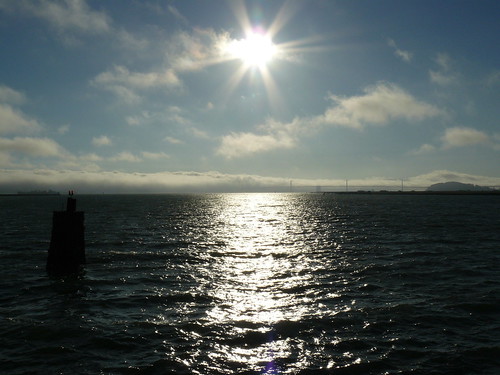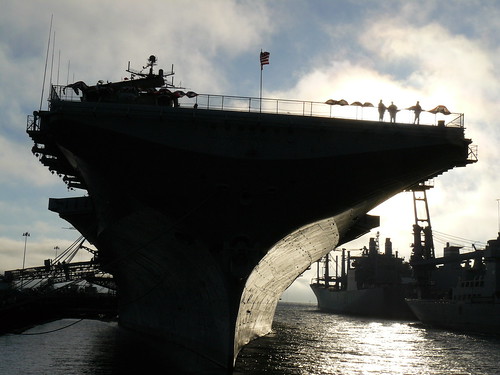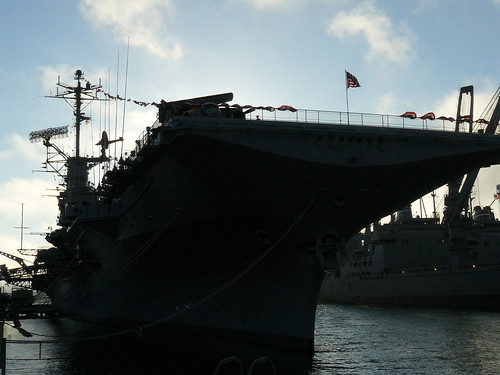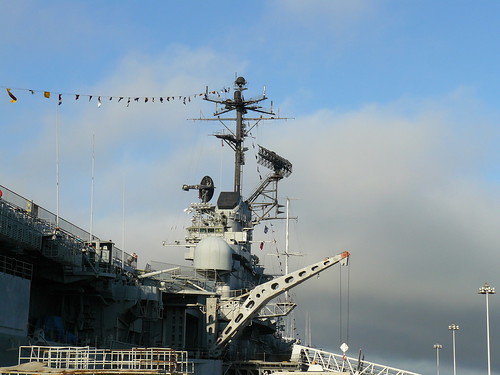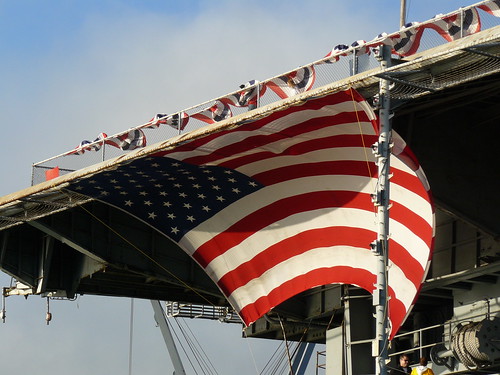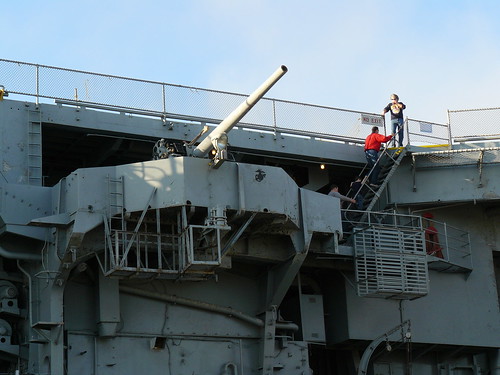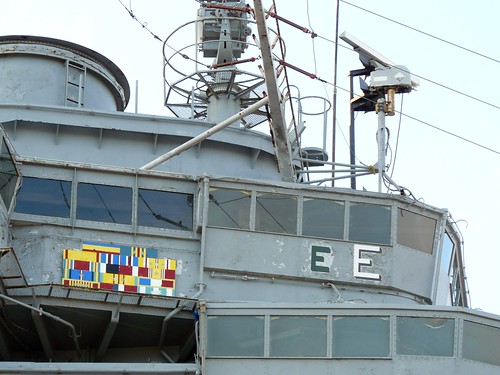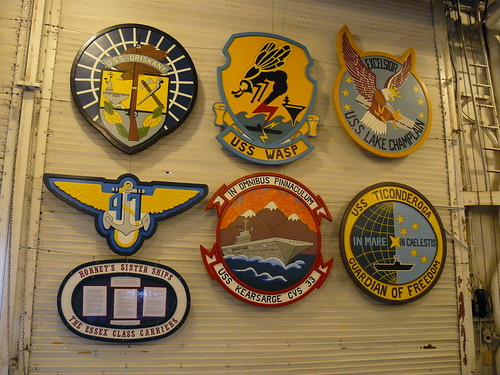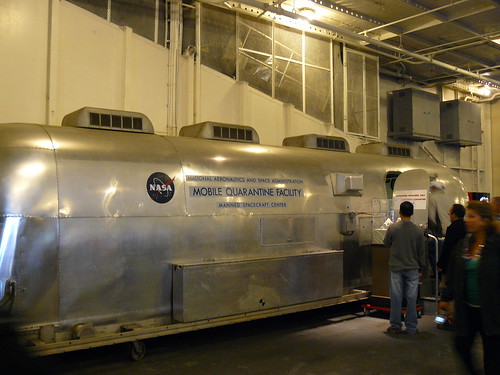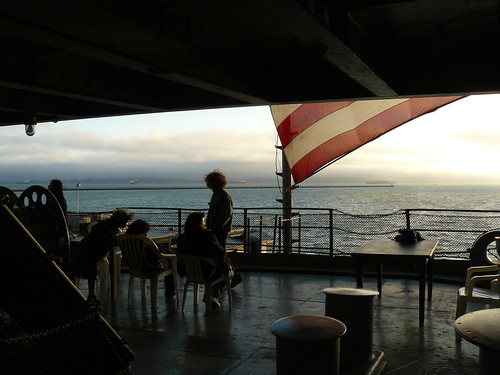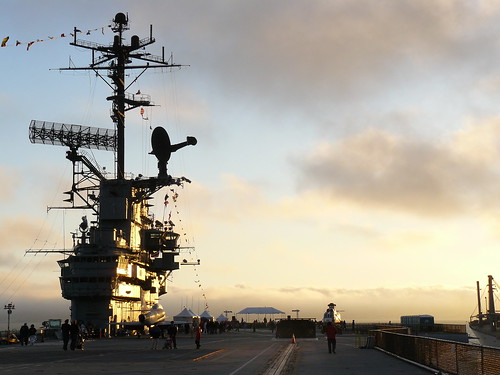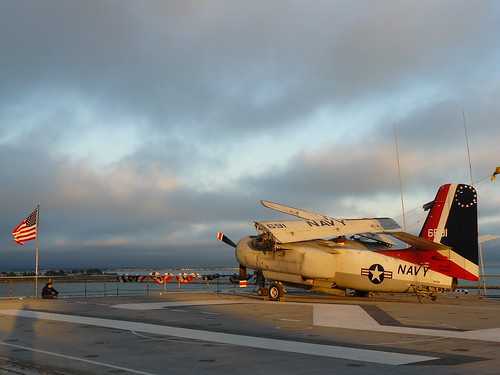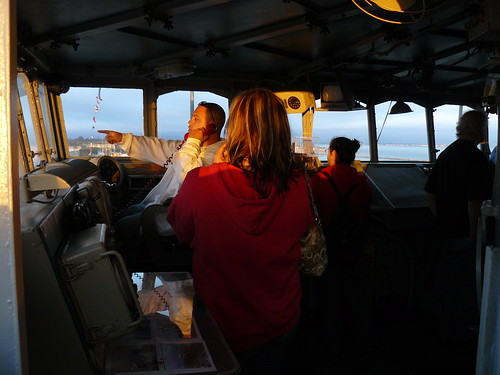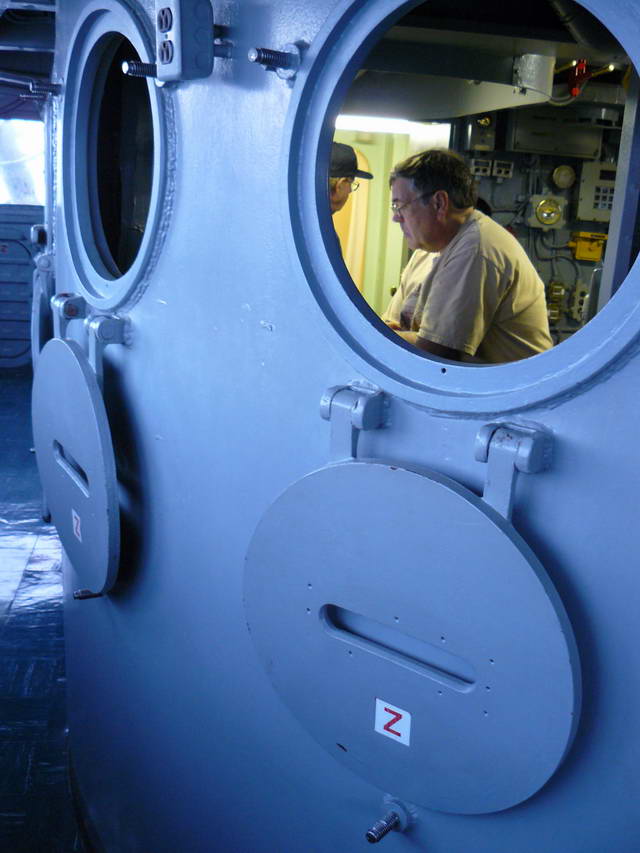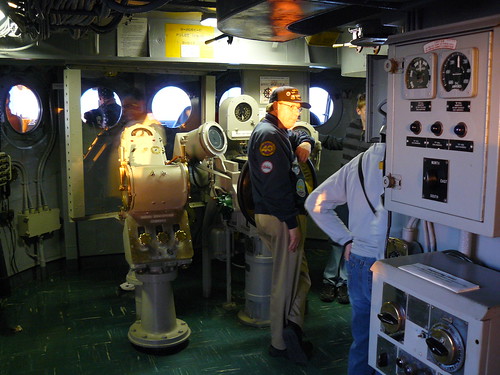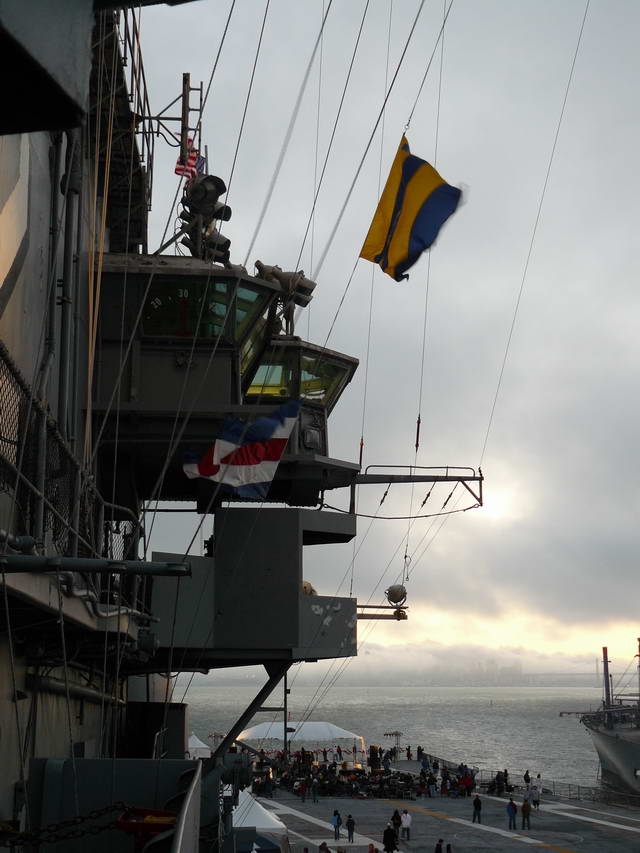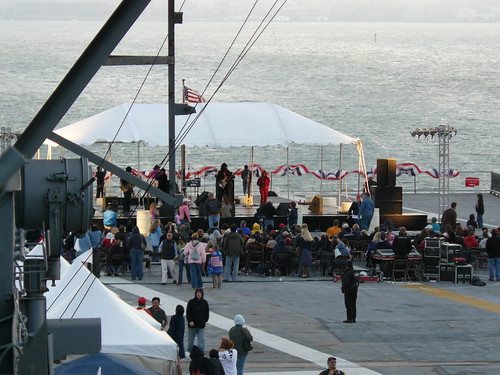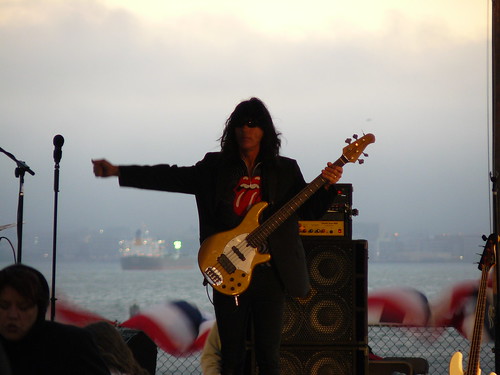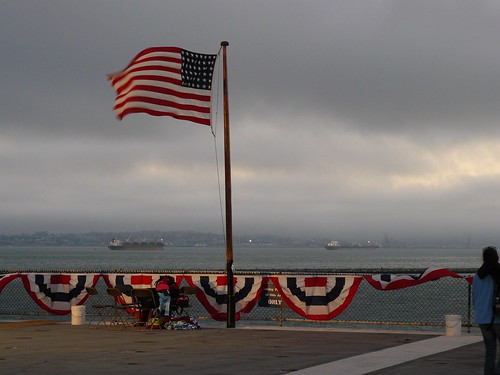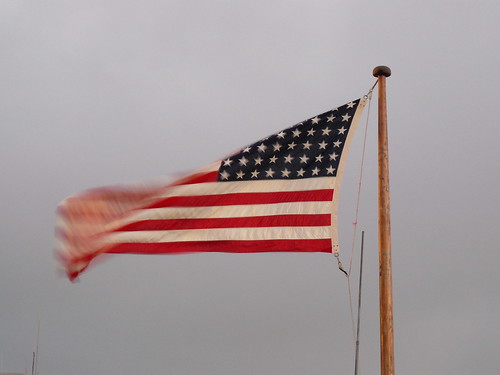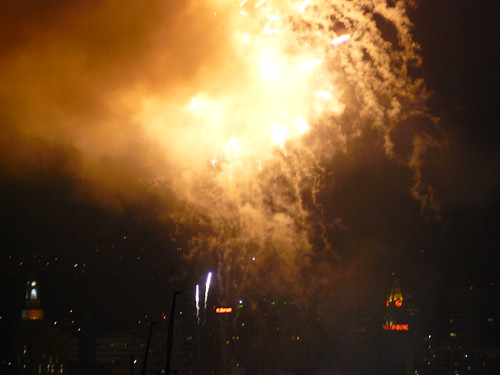|
|
Blogroll
|
|
Most recent articles |
|
Highlights |
|
States and Economies |
|
World economies: 15 of 50 largest economies are U.S. States: |
|
World States – Table 1 |
|
History and Society |
|
Fourth of July aboard the W.W. II aircraft carrier the U.S.S. Hornet |
|
A. L. Kroeber's The Civilization of California's Far Northwest |
|
The Arab Admiralty – and an Arab naval view of the Crusades |
|
Excerpt from “The Wife of Bath's Prologue” by Geoffrey Chaucer |
|
“Horsey” Vikings: exploring origin of the “Rohirrim” in The Lord of the Rings
|
|
The Battle of Crécy by Winston S. Churchill |
|
Monotheistic Paganism, or just what was it Christianity fought and faced? |
|
Medieval constipation advice for travelers: “A ripe turd is an unbearable burden” |
|
Alexis de Tocqueville's bicentennial: Anticipatory censorship in colonial America |
|
Antiquity vs. Modernity: Alexis de Tocqueville on the mind of the slaveholder vs. soul of America |
|
Federalism, and Alexis de Tocqueville on the origins of American democracy |
|
Science, Technology, Space |
|
Looking in the right direction – towards the future – with regard to global warming |
|
Know Your Neighborhood: from Andromeda to Fermions and Bosons |
|
Magnetars and Pulsars: Science's special section on pulsars |
|
The Geneva-Copenhagen Survey of Sun-like Stars in the Milky Way |
|
Galactic Central: the Black Hole at the Center of the Galaxy |
|
Politics and War |
|
America’s strong arm, wielding the Sword of Iraq, slays the multi-headed Hydra of Al Qaeda |
|
Regional and Personal |
|
Tamara Lynn Scott |
What wailing wight
Calls the watchman of the night?
William Blake
Whirl is king
Aristophanes
“Jumping into hyperspace ain't like dustin' crops, boy.”
Han Solo, another galaxy
|
Blogroll |
|
Grand Central Station |
|
Legal and Economic |
|
History and Society |
|
Science, Technology, Space |
|
Politics and War |
|
Eclectic |
|
Regional |
|
Reciprocal |
© Copyright 2002 – 2009
Michael Edward McNeil
Impearls: 2009-07-19 Archive
Earthdate 2009-07-20
| The Earths of Alpha Centauri |
|
|
Figure 1. Schema of the Alpha Centauri system |
As a Board member of the Friends of the U.C. Santa Cruz Library, I was invited this year to assist in judging UCSC's annual Graduate Research Symposium, in which the university's graduate students present personal or poster presentations concerning their thesis research for prestige, prizes, and trophies.
The winner of this year's entire event was a female graduate student, Javiera Guedes of the Astronomy and Astrophysics department at UCSC, who presented a talk on “The Earths of Alpha Centauri,” concerning the likelihood that both principal stars of the binary Alpha Centauri system possess planets, which we should be able to start discovering (as detection technology has steadily improved, and given a determined search) within the next several years.
I wrote up a brief report on Guedes' talk for a mailing list, only to be subsequently invited by editor Kevin Langdon (also endorsed by Javiera) to expand that piece for the Mega Society's online journal Noesis's upcoming special issue on Astronomy and Space.
University of California at Santa Cruz astronomy and astrophysics graduate student Javiera Guedes (first author), together with her coauthors, have published a fascinating piece in The Astrophysical Journal titled the “Formation and Detection of Terrestrial Planets around α [Alpha] Centauri B” 1 — which in my view deserves far wider audience and consideration than it can receive in that journal, however prestigious and renowned a scientific journal it assuredly is.
The subject of that paper, the binary Alpha Centauri star system (also known as Rigil Kentaurus or Toliman), at some 4.4 light years (or about 1.3 parsecs) distant from the Sun, is the closest extrasolar stellar system to our own Solar System and Earth. The brightest star in that system Alpha Centauri A is quite similar to our Sun in mass (at ∼1.105 solar masses), and extremely similar in color and thus temperature (classed like the Sun as a spectral type G2 V, a so-called “yellow dwarf”), whilst its companion Alpha Centauri B is only slightly smaller (∼0.934 times the Sun's mass) and a bit redder and therefore cooler (spectral type K1 V) than the Sun. One might note that the Alpha Centauri system (at about 5.6–5.9 Gyr) is between 1 and 1.3 billion years older than our Sun and Solar System, while it's about half again as rich in “metals” (as astronomers regard them: i.e., elements heavier than hydrogen and helium) as our own system.
Though it has a third, much smaller (∼0.1 solar mass) spectral type M “red dwarf” companion star known as Proxima Centauri — swinging at an enormous distance (perhaps a fifth of a light year) away from its principals — however ignoring Proxima, Alpha Centauri is essentially a close binary star system; and thus one might imagine that Alpha Centauri's two principal stars A and B's gravitational interference on each other would forestall prospects for any stable planets circling either star. As it happens, however, those primary components of Alpha Centauri are not actually all that close, orbiting each other some 23 astronomical units (23 times the distance between the Earth and the Sun, abbreviated AU) apart from each other — equivalent to B (or A) circling between the orbits of Uranus and Neptune (in our Solar System) with regard to the other — and as a result planets orbiting beyond what would be the orbit of Mars here, up to some 3 AU away from its primary (or well into our asteroid belt) are not ruled out around either star; moreover any planets (if they exist) are computed with high probability to be stable for the requisite billions of years time. Moreover, planets have already been discovered orbiting other roughly similar binary stars (e.g., γ [Gamma] Cephei, HD 41004, and Gliese 86) having basically equivalent separations from each other.
Indeed, Alpha Centauri A and B would probably even have performed a positive perturbative role with regard each other's incipient planetary systems, similar to that which the gas giants Jupiter, Saturn, and beyond are thought to have played in planetary evolution here in our Solar System, to wit providing “perturbations allow[ing] for the accretion of a large number of planetary embryos into a final configuration containing 3–4 bodies.” (Note that we omit end-note references in all quotes from The Astrophysical Journal article.)
Alpha Centauri B, as a cooler, “quieter,” less variable and flare-prone star than Alpha Centauri A (or the Sun for that matter), as a result is somewhat easier than A to detect any planets circling round. Thus it is on B that the authors concentrate their attention, estimating that after only about three years of “high cadence” observations (watching B on basically every night that there's good seeing, which could be close to 300 days a year), one could detect (using the so-called Doppler or radial-shift detection method) a planet of only some 1.8 Earth-masses circling within B's so-called “habitable zone,” while somewhat smaller worlds ought to become apparent in only a couple of years more.
Whilst it's also sometimes possible to detect extrasolar planets by observing their transit (or eclipse) across the disk of their primary star as seen from Earth, that method requires that the plane of any planets' orbits be closely aligned with the direction of our Sun with respect to that system — which is obviously extremely unlikely when attempting to locate worlds circling any particular star — and thus such an approach is suitable only for statistical surveys of a great many stars, not for finding the planets of any specific suns.
In addition to evaluating how Alpha Centaurian planets could be observed from the perspective of Earth, the authors conducted a number of computed simulations (eight in all) of possible routes to planetary system formation, starting from initial circumstances “mimic[ing] conditions at the onset of the chaotic growth phase of terrestrial planet formation in which collisions of isolated embryos, protoplanets of approximately lunar mass, dominate the evolution of the disk. During this phase, gravitational interactions among planetary embryos serve to form the final planetary system around the star and clear out the remaining material in the disk. At the start of this phase, several hundred protoplanets were presumed to orbit the star on nearly circular orbits.” Each run of the simulation “populate[d] the disk with N = 400 to N = 900 embryos of lunar mass […].”
Simulation number 7 (see Figure 3), specially exemplified herein and in The Astrophysical Journal article (known as r600_1 there), started with 600 embryos.
All bodies in the simulations interact only through gravity and the evolution of their positions and velocities with time were calculated using the MERCURY code, designed for the presence of a binary companion and allowing planetary embryos to collide and stick together to form larger planets.
The investigators “focus[ed] on terrestrial planet formation around α Cen B […].” As they note, “[P]lanet formation around α Cen A is expected to be qualitatively similar.”
Figure 2 illustrates how simulations of the evolution of a planetary system surrounding Alpha Centauri B typically progressed (using simulation 7):
|
Figure 2.
Simulated evolution of a planetary system (simulation 7) for Alpha Centauri B
|
The authors describe the foregoing figure thusly:
Figure [2] shows the late evolutionary stage of a protoplanetary disk initially containing 600 moon-mass embryos ([appearing in Figure 3 as simulation number 7]). The radius of each circle is proportional to the radius of the object. Bodies in the outer parts of the disk ([orbital semimajor axis] a > 3 AU) are immediately launched into highly eccentric orbits and either migrate inward to be accreted by inner bodies, collide with the central star, or are ejected from the system […]. In this simulation, ∼65% of the total initial mass is cleared within the first 70 Myr. By the end of simulation [7], four planets have formed. One planet has approximately the mass of Mercury and is located at a = 0.2 AU, two 0.6 [Earth mass] planets form at a = 0.7 and a = 1.8 AU, and a 1.8 [Earth mass] planet forms at a = 1.09 AU.
[…] All of our simulations result in the formation of 1–4 planets with semimajor axes in the range 0.7 < a < 1.9 AU […]. We find that 42% of all planets formed with masses in the range 1–2 [Earth masses] reside in the star's habitable zone (Fig. [3]), taken to be 0.5 < ahab < 0.9 [AU]. […]. All of our disks form systems with one or two planets in the 1–2 [Earth] mass range.
Figure 3 illustrates the results of all eight Alpha Centauri B system evolution simulations that the authors performed. The especially illustrated simulation used herein appears as number seven near the bottom, whilst for comparison our Solar System is shown to scale at top.
|
Figure 3.
Simulated planetary systems of Alpha Centauri B
|
We see that realistic astrophysical simulations predict that planets surrounding Alpha Centauri B (as well as a similar system circling A) are quite likely. What will it take to actually find such worlds, if they do exist?
As noted earlier, due to the extreme unlikelihood of any specific stellar planetary system's equivalent of our “plane of the ecliptic” (the plane in which its planets' orbits generally circle) exactly lining up on edge as seen from Earth, the transit method for detecting extrasolar planets cannot be applied (other than by the remotest chance) for locating worlds orbiting specific suns — leaving only the “Doppler wobble” approach available for finding planets in more particular circumstances. Even for that method to work, the plane of a given star's planetary orbits must not directly face the Sun (i.e., the axis of that plane mustn't be oriented directly toward or away from the Sun), as there has to be some planetary radial velocity toward or away from the Earth for us to detect. Inasmuch as theoretical considerations imply that the orbital plane of planets circling either star of a close binary system should in general be aligned with the orbits of the stars themselves as they revolve about each other — and since in the case of the Alpha Centauri system, its two stars' orbital plane can be observed to be inclined to the line of view from here in the Sol System by a mere 11 degrees (the axis of that plane being almost perpendicular to the line of sight from the Earth) — thus planets circling either A or B are nearly ideal for detection from Earth using the radial-velocity technique.
Indeed, as the authors of this study conclude: “α Cen B is overwhelmingly the best star in the sky for which one can contemplate mounting a high-cadence [nightly] search” for extant terrestrial worlds, among other things because “α Cen B is exceptionally quiet, both in terms of acoustic p-wave mode oscillations and chromospheric activity.”
They note that “[t]he radial velocity [Doppler] detection of Earth-mass planets near the habitable zones of solar-type stars requires cm s−1 [centimeter per second velocity] precision,” whereas Alpha Centauri A exhibits (rather Sun-like) oscillatory noise on the order of 1 to 3 m s−1 (meters per second), which would effectively swamp attempts to detect planets circling A using near-term technology. Alpha Centauri B, on the other hand, as a fundamentally quieter star, displays peak amplitude noise on the order of 0.08 m s−1 (8 cm/second), which is also far higher in frequency than the periods of any potential terrestrial planets to be detected. As a result, a “focused high cadence approach involving year-round, all-night observations would effectively average out the star's p-mode oscillations.”
Observations also reveal that Alpha Centauri B exhibits much less chromospheric variability associated with stellar flares than does A (the former modifying its x-ray brightness only within a factor of two over a couple of years time whilst A could be observably seen to vary by an order-of-magnitude factor of ten).
The paper further points out that:
α Cen B is remarkably similar in age, mass, and spectral type to HD 69830, the nearby K0 dwarf known to host three Neptune mass planets. Both α Cen B and HD 69830 are slightly less massive than the Sun with masses 0.91 and 0.86 [solar masses] respectively. Their estimated ages are 5.6–5.9 Gyr for α Cen B and 4–10 Gyr for HD 69830. Both stars are slightly cooler than the Sun: α Cen B is a K1 V with [an effective temperature] Teff = 5350 K, while HD 69830 is a type K0 V star with Teff = 5385 K. The stars have also similar visual absolute magnitudes, MV = 5.8 for α Cen B and MV = 5.7 for HD 69830; however, due to its proximity to us, the former star appears much brighter (mV = +1.34), allowing for exposures that are ∼60 times shorter. One can thus use a far smaller aperture telescope, or alternatively, entertain a far higher observational cadence.
Moreover, Alpha Centauri A and B being so close to each other in space as well as physically similar to one another allows parallel observations of the two stars to reveal concurrent variations which, seen in both, allow identification of systematic artifacts in the observational process, that can thus be filtered out of any meaningful results. Furthermore, as the study notes, the position of Alpha Centauri at about −60° declination in our southern sky is nearly perfect for virtually continuous night-by-night (“high cadence”) observations from two existing vantage points, the Las Campanas Observatory together with the Cerro Tololo Inter-American Observatory, both in Chile, either of which ought to provide up to almost 300 viewing days a year (60 days a year being basically unavailable while Alpha Centauri annually passes behind the Sun, plus a few more days lost as a result of bad weather).
Inasmuch as the proportionate density of binary, roughly solar-mass component star systems in this part of the galaxy is only about 0.02 per cubic parsec (1 cubic parsec = ∼35 cubic light years), since at this time the Alpha Centauri system hovers a mere 1.33 parsecs away from us, we're very lucky here in the Solar System having α Cen proceeding so close nearby during this era for us to perform this highly desirable search upon.
As The Astrophysical Journal paper concludes: “All these criteria make α Cen B the ideal host and candidate for the detection of a planetary system that contains one or more terrestrial planets.” Indeed, “our current understanding of the process of terrestrial planet formation strongly suggests that both principal components of the α Cen system should have terrestrial planets.”
Given that extremely tantalizing possibility, what will it take to find at least those worlds orbiting Alpha Centauri B, if they exist? As the authors make note:
A successful detection of terrestrial planets orbiting α Cen B can be made within a few years and with the modest investment of resources required to mount a dedicated radial-velocity campaign with a 1 m class telescope and high-resolution spectrograph. The plan requires three things to go right. First, the terrestrial planets need to have formed, and they need to have maintained dynamical stability over the past 5 Gyr. Second, the radial velocity technique needs to be pushed (via unprecedentedly high cadence) to a degree where planets inducing radial velocity half-amplitudes of order cm s−1 [centimeter per second] can be discerned. Third, the parent star must have a negligible degree of red noise on the ultralow frequency range occupied by the terrestrial planets.
In this paper, we have made the case that conditions 1 and 2 are highly likely to have been met. In our view, the intrinsic noise spectrum of α Centauri B is likely all that stands between the present day and the imminent detection of extremely nearby, potentially habitable planets. Because whole-Sun measurements of the solar noise are intrinsically difficult to obtain, our best opportunity to measure microvariability in radial velocities is to do the α Cen AB Doppler experiment. The intrinsic luminosity of the stars, their sky location, and their close pairing will allow for a definitive test of the limits of the radial velocity technique. If these limits can be pushed down to the cm s−1 level, then the prize, and the implications, may be very great indeed.
At this point well over three hundred planets have been discovered circling other stars beyond the Sun — all thus far found, due to hitherto operative technical limitations, necessarily being much larger than Earth and thus far from being really terrestrial in type. The Alpha Centauri system offers the opportunity to refine those limits downward towards worlds much closer in size, and thus potentially in habitability, to the Earth.
Figures 4 and 5 below illustrate how such a high-cadence search over a period of several years could zero in closer and closer towards identifying any planets of Alpha Centauri B that are truly terrestrial in scale.
|
Figure 4.
How the detection “periodogram” for a simulated Alpha Centauri B planetary system (simulation 7) evolves over 5 years of observations
|
|
Figure 5.
How nightly observations over 5 years build that periodogram for a simulated Alpha Centauri B planetary system
|
As the capability for detecting truly terrestrial-type planets circling round nearby stars approaches, we're on the cusp of an adventure grander by far than Columbus's voyages to the New World or other great discoveries of the age of exploration, not only for its tremendous scientific value (finding what variety of worlds so-called “terrestrial” planets can form, not to speak of the enormous significance of possibly discovering other independently evolved organisms inhabiting them), but also for the sake of the future history of mankind, along with the ultimate fate of all life dwelling on — but presently restricted to this single egg-basket of — our planet Earth.
In a discussion such as this of potential planets circling the component stars of the Alpha Centauri system, special recognition is due the late biochemist and most prolific science fiction and fact writer Isaac Asimov, for it was he who, just a half-century ago (in June, 1959), penned his far-sighted essay “The Planet of the Double Sun” 2 concerning the possibility of just such worlds existing. A quarter-century later, in 1985 he wrote another essay on the subject of life near Alpha Centauri called “The Double Star&rdquo 3; whilst in 1976 Asimov published an entire book on Alpha Centauri, The Nearest Star. 4
In regard to the intrinsic value of such planets, it's worth noting the ending of Asimov's affecting science fiction novel The End of Eternity 5, which serves as the introduction to his famous Galactic Empire and Foundation series of stories. In the context of this tale, when it is realized that ready access to the universe is at hand for humanity (provided they take a critical step, namely make a certain change to the past), the principal protagonist wonders aloud what good it would really do if they should indeed accomplish it:
“And what would have been gained?” asked Harlan doggedly. “Would we be happier?”
Whereupon his erstwhile enemy, more recent ally, and soon to be spouse replies:
“Whom do you mean by ‘we’? Man would not be a world but a million worlds, a billion worlds. We would have the infinite in our grasp. Each world would have its own stretch of the Centuries, each its own values, a chance to seek happiness after ways of its own in an environment of its own. There are many happinesses, many goods, infinite variety…. That is the Basic State of mankind.”
Now, on the cusp of the fortieth anniversary of mankind's (as representative of all life on Earth) first visit in all the billions of years history of Earthly life to another planet, it's time to get on with it.
Let's find those worlds!
| absolute magnitude | intrinsic visual brightness of an object as it would be seen from a fixed distance — in the case of a star this is established as being 10 parsecs or 32.6 light years away |
| AU | astronomical unit, abbreviated AU (sometimes symbolized ua): one AU is the average distance between Earth and the Sun — about 150 million km or 93 million miles |
| binary star system | star system consisting of two stars orbiting each other about a common center of mass |
| chromosphere | relatively thin (perhaps 2,000 km thick in the case of the Sun) semitransparent layer in a star which lies just above its opaque photosphere or visible “surface” |
| chromospheric variability | activity or variability in a star which occurs within its chromosphere |
| Doppler wobble | method for locating extrasolar planets by the radial velocity (as seen from Earth) perturbations they induce in the motions of the primary star they orbit |
| Earth mass | mass of the Earth: some 6 × 1024 kg or about 0.31% the mass of Jupiter |
| dynamical stability | long-term probabilistic stability of planets over gigayears time against perturbations that would eject them from the system, or throw them into their primary star or each other |
| eccentric orbit | an orbital path that is a highly flattened ellipse rather than being approximately circular |
| ecliptic | rough plane in which the planets of the Solar System (exception: Pluto) generally orbit |
| extrasolar body | planet, star, or other body which orbits or moves outside the realm of the Solar System |
| gas-giant planet | giant planet like Jupiter which is composed principally of the gases hydrogen and helium |
| Gyr | gigayears: billions of years |
| habitable zone | region surrounding a star where temperatures on an Earth-type planet circling within that zone are suitable for life as we know it — in our Solar System it is considered to lie between about 0.95 to 1.37 AU from the Sun |
| half-amplitude | absolute (positive) value of maximum amplitude, as opposed to amplitudes varying in sign between positive and negative over a continuous approximately sine-wave cycle |
| high cadence | astronomical observations conducted at a high frequency — e.g., nightly |
| Jupiter mass | mass of Jupiter: around 2 × 1027 kg, or about 0.1% the mass of the Sun versus 318 times the mass of Earth |
| light year | the distance that light travels in vacuum in a year: about 9 trillion km or 6 trillion miles |
| Mercury mass | mass of the planet Mercury: about 3 × 1023 kg or around 5.5% the mass of Earth |
| metals | metals as astronomers regard them: to wit, elements heavier than hydrogen and helium |
| microvariability | small amplitude variability |
| Moon (or lunar) mass | mass of the Moon: some 7 × 1022 kg or about 1.2% the mass of Earth |
| Neptune mass | mass of Neptune: close to 1 × 1026 kg, or some 17 times the mass of Earth or 5.4% of Jupiter's mass |
| parsec | the distance at which an extrasolar body's parallax with regard to Earth's orbit around the Sun subtends an angle of one second of arc — approximately 3.26 light years |
| periodogram | measured periodic radial velocity variations in a star over time that might indicate the presence of planets |
| photosphere | opaque layer of a star which constitutes its visible “surface” |
| protoplanet | Moon-sized or larger planetary embryos orbiting a star within its protoplanetary disk |
| protoplanetary disk | rotating disk of gas and dust surrounding a fledgling star which may accrete into planets |
| radial velocity | velocity component of an extrasolar star or planet directed toward or away from Earth |
| red noise | low-frequency random noise emitted by a star under observation |
| semimajor axis | one-half of the length of the long axis of an elliptical orbit — equivalent to a body's average distance from its primary |
| spectral type | classification system for stars based on a star's color and thus its surface temperature |
| spectrograph | instrument measuring an object's light output across a spectrum of optical frequencies |
| stellar flare | eruption of plasma from the surface of a star |
| Sun (or solar) mass | mass of the Sun: about 2 × 1030 kg or some 333,000 times the mass of Earth |
| terrestrial planet | planets consisting primarily of rocks (normally silicate rocks) at least near the surface; as opposed to gas-giant planets |
| transit method | method for detecting an extrasolar planet by observing the dip in its primary star's light output as the planet passes directly in front of the star's disk as viewed from Earth |
Many thanks to talented astronomy and astrophysics graduate student Javiera Guedes for her support and suggestions as well as permission to use the figures (indeed her own modifications to one of the figures) from her and her coauthors' article in The Astrophysical Journal. One might note that Ms. Guedes herself will personally be conducting observations of Alpha Centauri later on this year. Kudos to her and the other investigators in this study, and best wishes in the great search!
1 J. M. Guedes, E. J. Rivera, E. Davis, and G. Laughlin (all at the University of California at Santa Cruz, Astronomy and Astrophysics department), E. V. Quintana (SETI Institute, Mountain View, CA), and D. A. Fischer (San Francisco State University, Physics and Astronomy department), “Formation and Detection of Terrestrial Planets around α Centauri B,” The Astrophysical Journal, Vol. 679, Issue No. 2 (2008), pp. 1581-1587; doi: 10.1086/587799.
2 Isaac Asimov, “The Planet of the Double Sun,” The Magazine of Fantasy and Science Fiction, 1959-06, Mercury Press, New York. Collected in Fact and Fancy, Doubleday & Co., Garden City, NY, 1962; also in Asimov on Astronomy, Anchor Press, Garden City, NY, 1975.
3 Isaac Asimov, “The Double Star,” American Way, American Airlines, 1985-09-03. Collected in The Dangers of Intelligence And Other Science Essays, Houghton Mifflin, Boston, 1986.
4 Isaac Asimov, Alpha Centauri, The Nearest Star, Lothrop, Lee & Shepard Co., New York, 1976.
5
Isaac Asimov, The End of Eternity, Doubleday & Co., Garden City, NY, 1955, p. 187.
UPDATE: 2009-07-19 19:40 UT: Version 2: Updated via suggestions from Javiera Guedes.
UPDATE: 2009-07-28 06:00 UT: Version 3: At the time of submission for publication in Noesis.
UPDATE: 2009-08-03 19:00 UT: Version 4: Further updates to the Noesis publication version, including adding the Glossary.
UPDATE: 2009-08-04 15:30 UT: Version 5: A few corrections.
UPDATE: 2009-08-05 03:40 UT: Version 6: Minor fix.
Labels: Alpha Centauri, Apollo 11, Apollo Program, astronomy, extrasolar planet, planet
Impearls: 2009-07-19 Archive
Earthdate 2009-07-04
| Fourth of July, 2008, aboard the W.W. II aircraft carrier the U.S.S. Hornet |
|
|
San Francisco Bay to the west of the Naval Air Station in Alameda, facing S.F. |
Fourth of July, 2008, aboard the W.W. II aircraft carrier the U.S.S. Hornet
There was concern arriving in the area that day that it would be thoroughly socked in (and thus cold and dreary) with San Francisco's famous fog, but even though great tongues of fog had pushed via the considerable onshore breeze some distance to the north and south of the U.S.S. Hornet's permanent home (at the Naval Air Station on the island of Alameda, California, along the eastern shore of San Francisco Bay) — and while the city of San Francisco to be seen across the bay was almost completely enveloped in it, fortunately however the day actually experienced in the environs of the Hornet itself was beautifully sunny; though with the typical stiff cold onshore breeze emerging out of that fog bank (I wore an overcoat and was glad of it, many others there that day did too).
(In these shots, as usual, simply click on an image to link to a substantially larger version of it….)
|
The illustrious aircraft carrier the U.S.S. Hornet (CV-12), commissioned 1943 |
Even considering that there are much more substantial (and nuclear-powered) aircraft carriers operating these days, it's still amazing seeing, not to speak of hoofing it from one end to the other and back again (several times) on, this historic old warship: basically several city blocks' of artificial territory placed end-to-end, several high decks deep bearing huge aircraft-carrying elevators, mounting massive engines (wish I could have seen them), thereafter set afloat to steam as an artificial steel island mounting a powerful mobile naval airfield (the pinnacle in military technology during its heyday) round the world's oceans and seas. Impressive isn't the word for it.
|
Antiaircraft artillery emplacement along the edge of the mobile military airfield |
|
The Hornet's bridge, together with its ship's decorations |
The U.S.S. Hornet (CV-12) had an illustrious career. Its namesake predecessor, the seventh American Hornet (CV-8), fought in the Pacific war's desperate turning-point Battle of Midway, afterwards going down to the bottom in the Battle of Santa Cruz later in 1942. Launched in 1943, its replacement, the eighth, now Essex-class Hornet, the instance before us, as the ship's museum web site notes, accomplished the following:
- For 16 continuous months she was in action in the forward areas of the Pacific combat zone, sometimes within 40 miles of the Japanese home islands.
- Under air attack 59 times, she was never hit.
- Her aircraft destroyed 1410 Japanese aircraft, only ESSEX exceeded this record.
- Her air groups destroyed or damaged 1,269,710 tons of enemy shipping.
- 10 HORNET pilots attained “Ace in a Day” status.
- 30 of 42 VF-2 Hellcat pilots were aces.
- 72 enemy aircraft shot down in one day.
- 255 aircraft shot down in a month.
- Supported nearly every Pacific amphibious landing after March 1944.
- Scored the critical first hits in sinking the super battleship YAMATO.
- In 1945 launched the first strikes against Tokyo since the 1942 Doolittle Raid.
“A HERITAGE OF EXCELLENCE” is the ship's creed:
- Earned 9 battle stars for her service in WWII.
- Awarded the Presidential Unit Citation for her WWII operations (only nine carriers so cited).
- Flawlessly recovered the Apollo 11 and Apollo 12 astronauts, the first men on the moon; 1969.
- USS HORNET (CVS-12) is designated a National Historic Landmark; 1991.
- HORNET opens to the public as an aircraft carrier museum in Alameda, California; 1998.
- USS HORNET is designated a State Historic Landmark; 1999.
- The F/A-18 strike fighter carries on the name of HORNET in today's NAVY.
The Hornet's extensive resume is also presented graphically within the carrier's high-rising hanger deck:
|
Battle resume of the U.S.S. Hornet (CV-12) |
|
Emblems of some of the U.S.S. Hornet's World War II Essex-class sister ships |
The kind of extreme action the Hornet and its sisters and kin experienced during World War II makes fond illusions about a “quagmire” in the present war in Iraq seem badly misplaced (especially now that the war there is winding down and nearly won). [Written in July of 2008; now of course that prognosis has simply been confirmed by an additional year's events.]
|
The Hornet's vast hanger deck serves today as a museum of naval aviation |
After such notable and terrific service during World War II, the Hornet entered into a second life during the fifties and sixties (performing antisubmarine-warfare carrier duty during that period, for instance), then directly supporting the Gemini and Apollo Moon program, ultimately retrieving the first two expeditions to visit surface of the Moon — Apollos 11 and 12 — from the sea, following their fireball return to this planet.
|
Apollo lunar command module presentation, on the Hornet's hanger deck |
Following their return from visiting the surface of the Moon, the Apollo astronauts spent a preplanned few weeks in a quarantine facility, as a precaution against the very remote eventuality that some dread malady could have been acquired by the astronauts during their visit to the (with little doubt) sterile surface of the Moon. As expected there was no such contagion.
|
NASA Mobile Quarantine Facility, for isolating lunar astronauts after their return |
It looks like a modified “Airstream” trailer, actually — I wonder if that's what NASA did? (A fellow can be seen examining a display of a moon rock just in front of the entrance.)
|
Kids play on the Hornet's hanger-deck stage |
In the relaxed atmosphere of the Hornet's hanger deck (where the hectic though pleasant vibes of the band up atop the flight deck seemed far away), Kids enjoyed playing at hamming it up on the Hornet's flag-draped stage — while their doting parents oftentimes stood out in the “audience” videotaping them against the starry-striped backdrop.
As a result of various instances of blurred motion, one can see that no was flash used anywhere during this visit to the Hornet — even in quite low-light situations — though the Panasonic DMC-FZ8 camera employed does possess a built-in flash, which generally works adequately well. Didn't turn out too bad, I'd have to say, though in retrospect I might have used the flash on a couple of occasions (such as for the fireworks -- just joking; actually what the fireworks could have used was turning off autofocus, while setting manual focus to infinity; along with mounting the camera on a tripod.)
For those occupying the stern end of the great aircraft carrier's hanger deck, folks enjoyed a relaxing (if bracing) view overlooking San Francisco Bay….
|
Looking out Hornet's hanger-deck stern overlooking San Francisco Bay |
Thereafter, whilst angling through various narrow passageways and clambering up and down steep ship's stairs aboard the old steel warcraft, one closely encounters the antiaircraft cannon glimpsed from dockside before….
|
Antiaircraft artillery position on the U.S.S. Hornet |
Ah, just the thing for an American gun-lover's back (or maybe front) yard! That ought to deal with all those naggling drive-by shootings! (/attempted humor)
One might note that in the recent U.S. Supreme Court decision issued just the other day concerning the Constitution's Second (gun rights) Amendment, all nine Justices (including those appointed by liberal presidents) affirmed (with some variance from the majority 5-4 opinion concerning the extent of resulting legal protections, but unanimously as to) the basic individual rights interpretation of the original intent of the American founding fathers in composing the Second Amendment. As a result, the “collective rights” interpretation — whereby for decades legal “experts” solemnly intoned that when it said “the right of the people” it really meant “the right of the state(s)” — is now officially dead as a doornail. It is an individual right to keep and bear arms that the U.S. Constitution guarantees — though admittedly (and thankfully) that right does not extend to such things as personal WMD.
|
The command “Island” rises above the Hornet's flight deck |
Once up on the flight deck, the aircraft carrier's commanding “Island” rises like an arcane metallic crag + treehouse, or vertical mandala, above the flattop “plateau.” (We're viewing the sternward-facing side of the island, opposite the bridge per se. The windowed area visible on this side isn't the ship's bridge proper but rather, I believe, controlled flight operations.) Hanging off the tower above, flags flap, and radar antennae rotate, like watchful eyes. On the left, today, kiosks provide refreshments.
|
Diagonal view of the Hornet's commanding Island |
My ex-wife Tamara appears in the shot above, at lower right with her TV production camera, wearing my Ecuadorian poncho for warmth….
|
The Hornet's flight deck stretches out like a long, flat plateau |
|
The bow of the flight deck on the Hornet |
The bow of the aircraft carrier's flight deck, at the exact opposite end from where the band was set up, was a bit lonely during the celebration — until, later, the city of Oakland's fireworks commenced, that is!
Ascending into the Island into the Hornet's Bridge, one obtains great views looking down on the flight deck and surrounding terrain….
|
Looking out from the Hornet's bridge toward the bow of the great ship |
|
In the captain's chair on the U.S.S. Hornet's bridge |
“Captain James Cook,” er… “Kirk” issues an order on his communicator — “Warp factor eight, Scotty…!” (or should that be, “Full steam ahead!”).
In the bridge, the pilothouse receives some special armor protection, but the outer area, ringed by windows, does not:
|
Armor surrounding the pilothouse on Hornet's bridge |
|
In Hornet's pilothouse on the bridge |
Descending from the bridge, the sun was close to setting at that point in the bank of fog, whilst near the stern of the flattop, the band played on….
|
View from walkway leading to Hornet's bridge, of the stern, band, and bay |
|
The band pavilion at the stern of the Hornet |
As the sun set behind the fog bank and lights began coming on across the bay, the final band, the “Unauthorized Rolling Stones” — not a military or marching band, one might note, like the other bands playing that day — finished up its set. As their name implies, specializing in Rolling Stones compositions, and not doing too bad a job on them I'd say, they performed a number of oldies from other groups as well. (I don't recall them doing the Stones' “20,000 light years from home” though, which this ship certainly makes me think of — as an analogy to the “Starship Enterprise” in Star Trek — indeed, there is an in-commission U.S. nuclear-powered aircraft carrier today called the U.S.S. Enterprise ….)
|
Lights alight across the bay as the band completes its set |
Notice in the background of the last shot above how the Transamerica Pyramid skyscraper pokes up out of the top of the fog bank, above San Francisco's foggy cityscape.
Behind the band, at the stern end of the flight deck facing San Francisco Bay, a remembered flag flaps in the breeze…. Note the number and pattern of stars. This is the 48-star flag that the Hornet fought under during World War II — and in the fifties, during the Korean War.
|
A remembered flag waves in the breeze |
The evening ended with spectacular fireworks in several directions — except the direction of San Francisco, whose own fireworks were lost in the fog — with just an occasional flash, like distant lightning, visible from that direction. Other points of the compass held greater wonders:
|
Fireworks over Oakland, from the flight deck of the Hornet |
That one kind of looks like a Hubble Space Telescope photo, no? The Orion Nebula….
After that there was nothing to do but join the hour-long traffic jam getting off Alameda island and onto the freeway heading towards home.
Labels: aircraft carrier, Alameda, Apollo Program, Fourth of July, San Francisco, San Francisco Bay, US Navy, USS Hornet, World War II
| (Blank last screen) |
|
2002-11-03 2002-11-10 2002-11-17 2002-11-24 2002-12-01 2002-12-08 2002-12-15 2002-12-22 2002-12-29 2003-01-05 2003-01-12 2003-01-19 2003-01-26 2003-02-02 2003-02-16 2003-04-20 2003-04-27 2003-05-04 2003-05-11 2003-06-01 2003-06-15 2003-06-22 2003-06-29 2003-07-13 2003-07-20 2003-08-03 2003-08-10 2003-08-24 2003-08-31 2003-09-07 2003-09-28 2003-10-05 2003-10-26 2003-11-02 2003-11-16 2003-11-23 2003-11-30 2003-12-07 2003-12-14 2003-12-21 2003-12-28 2004-01-04 2004-01-11 2004-01-25 2004-02-01 2004-02-08 2004-02-29 2004-03-07 2004-03-14 2004-03-21 2004-03-28 2004-04-04 2004-04-11 2004-04-18 2004-04-25 2004-05-02 2004-05-16 2004-05-23 2004-05-30 2004-06-06 2004-06-13 2004-06-20 2004-07-11 2004-07-18 2004-07-25 2004-08-22 2004-09-05 2004-10-10 2005-06-12 2005-06-19 2005-06-26 2005-07-03 2005-07-10 2005-07-24 2005-08-07 2005-08-21 2005-08-28 2005-09-04 2005-09-11 2005-09-18 2005-10-02 2005-10-09 2005-10-16 2005-10-30 2005-11-06 2005-11-27 2006-04-02 2006-04-09 2006-07-02 2006-07-23 2006-07-30 2007-01-21 2007-02-04 2007-04-22 2007-05-13 2007-06-17 2007-09-09 2007-09-16 2007-09-23 2007-10-07 2007-10-21 2007-11-04 2009-06-28 2009-07-19 2009-08-23 2009-09-06 2009-09-20 2009-12-13 2011-03-27 2012-01-01 2012-02-05 2012-02-12
